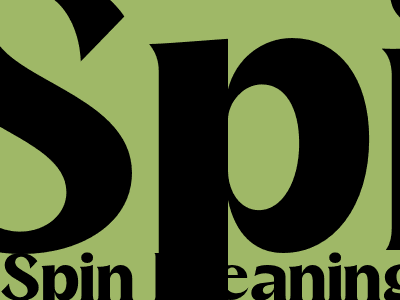Spin Meaning: A Comprehensive Guide
Understanding Spin in Writing
Spin, in the context of writing, refers to the deliberate selection and presentation of facts and opinions in a biased manner to influence the reader's perception of an issue. It involves manipulating language and framing information to support a particular viewpoint or agenda.
Spin can be employed in various forms, such as selective reporting, omission of crucial details, exaggeration, or distortion of facts. The goal is to shape the narrative and create a desired impression in the reader's mind.
Types of Spin
Positive Spin
Positive spin presents information in a favorable light to promote a specific perspective or entity. It highlights strengths, downplays weaknesses, and uses flattering language to create a positive image.
Negative Spin
Negative spin, on the other hand, aims to discredit or undermine an individual, issue, or organization. It exaggerates flaws, ignores positive aspects, and employs derogatory language to create a negative impression.
Neutral Spin
Neutral spin aims to present information objectively without bias or agenda. It attempts to provide a balanced view by presenting both positive and negative aspects, allowing readers to form their own opinions.
Ethical Implications of Spin
While spin can be an effective tool for communication, it raises ethical concerns when used unethically or to deceive readers. It undermines trust, distorts reality, and can lead to misinformed decision-making.
Journalists and writers have a responsibility to present information accurately and fairly, avoiding spin that misleads or manipulates readers. Transparency and disclosure of biases are crucial for maintaining credibility.
Recognizing Spin
To recognize spin in writing, it's important to be aware of the following techniques:
- Selective reporting: Focusing on specific facts while omitting others that could provide a more balanced perspective.
- Exaggeration: Overstating claims or sensationalizing events to create a more dramatic impact.
- Distortion: Presenting information in a way that alters its meaning or context.
- Flattering language: Using positive adjectives and adverbs to create a favorable impression.
- Derogatory language: Using negative adjectives and adverbs to create an unfavorable impression.
By being aware of these techniques, readers can critically evaluate information and identify potential spin.
Conclusion
Spin is a common practice in writing that can influence readers' perceptions and opinions. While it can be used ethically to present a specific perspective, it's crucial to maintain transparency and avoid deception.
By understanding the types, ethical implications, and techniques of spin, readers can become more informed and discerning when encountering biased or spun information.

Komentar